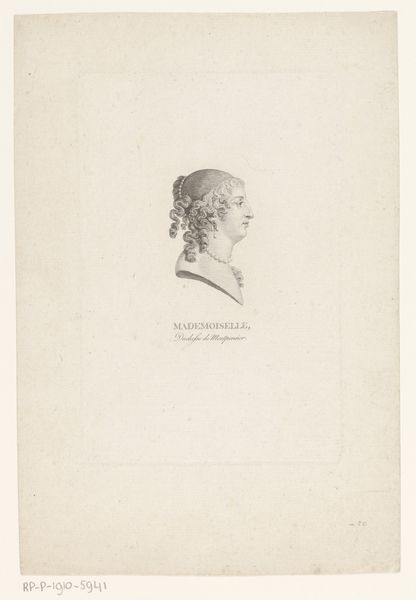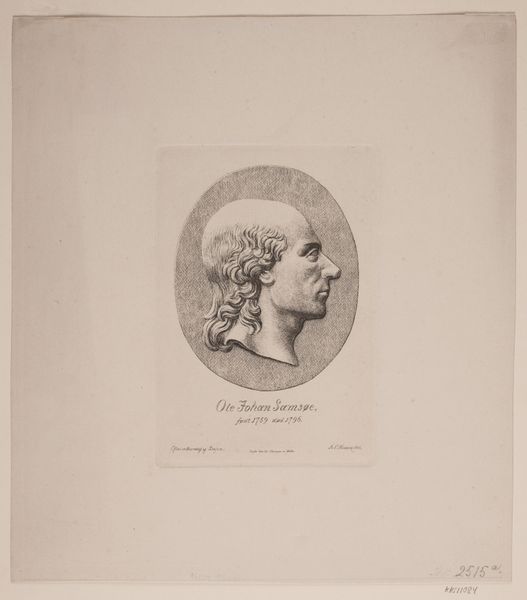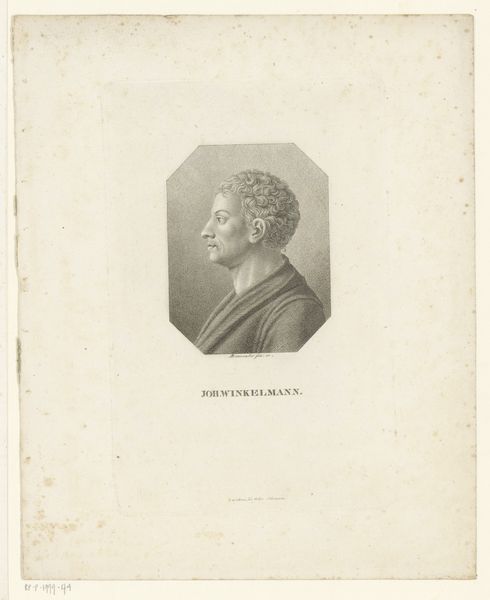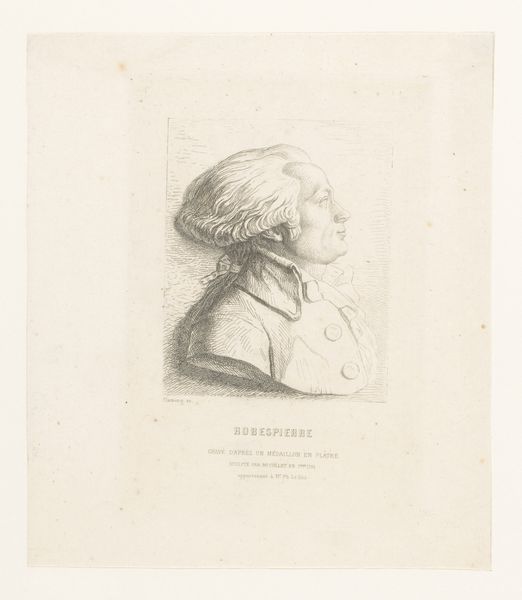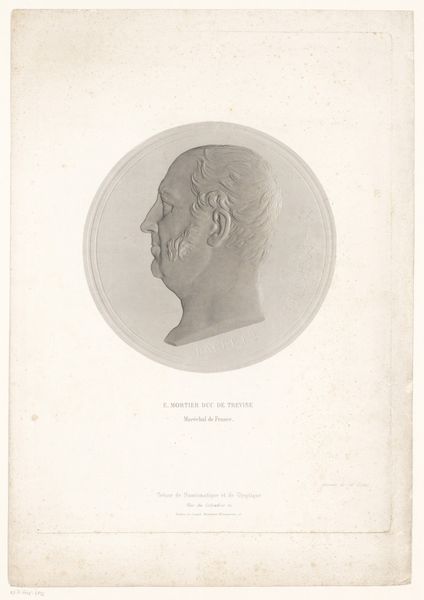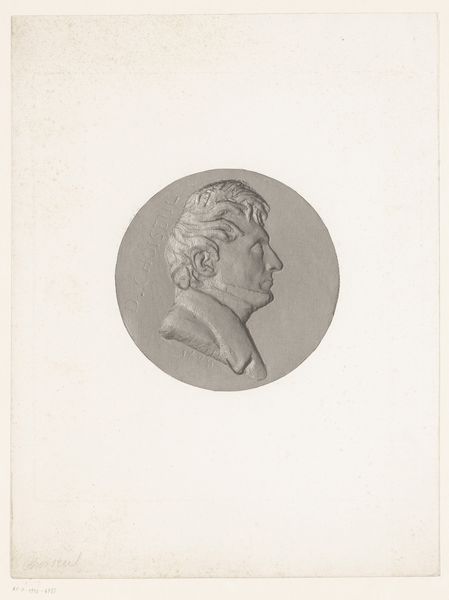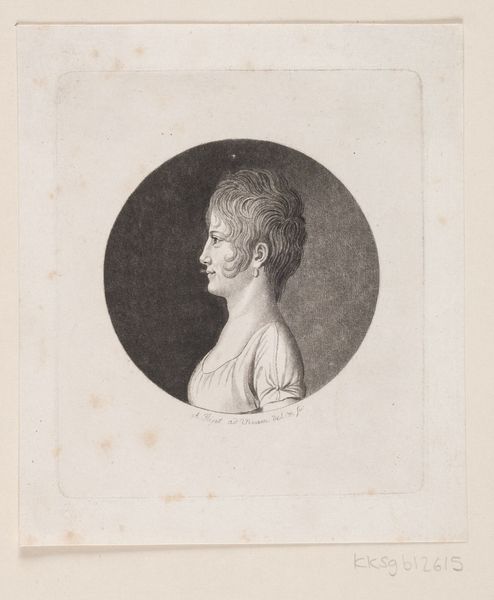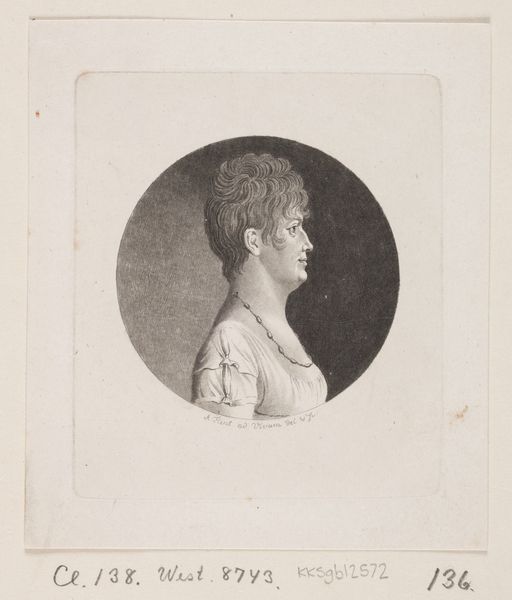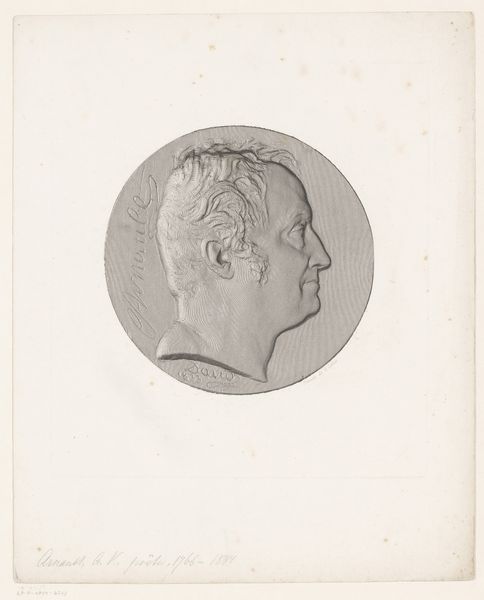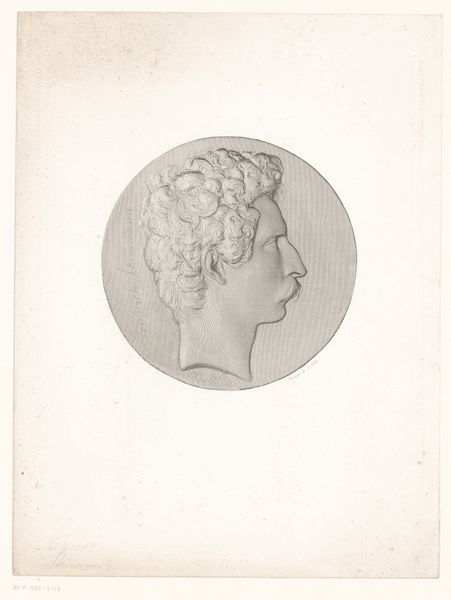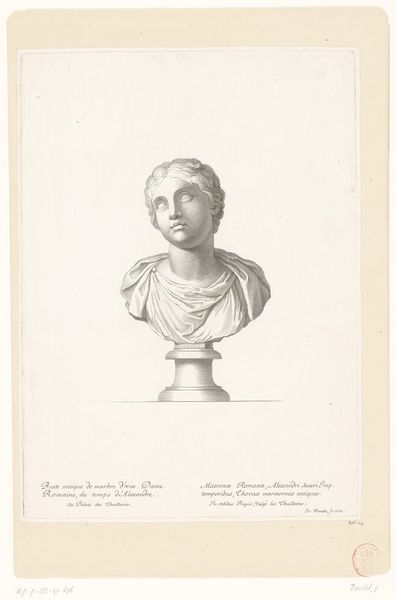
print, engraving
#
portrait
#
neoclacissism
# print
#
academic-art
#
engraving
#
realism
Dimensions: height 410 mm, width 250 mm
Copyright: Rijks Museum: Open Domain
Carel Christiaan Antony Last created this print of Franciscus Hemsterhuis in the Netherlands, sometime in the 19th century. The bust portrays a Dutch philosopher, philologist and mathematician, yet it is a portrait made without the traditional use of color, depth, or perspective. The image is a lithograph, a printmaking technique that became popular in Europe during the 19th century. It was a relatively inexpensive and efficient way to reproduce images, which is why it was often used for portraits. What does it mean to strip away some of the defining features of portraiture? Here, Hemsterhuis is presented as a figure of pure intellect, a kind of modern-day philosopher. In the Dutch context of the 19th century, the figure of the intellectual was highly valued. Hemsterhuis, as a philosopher and scholar, was a symbol of Dutch intellectual achievement, an era in which the public role of art and the politics of imagery were often intertwined. Further research into Last’s own biography and that of Hemsterhuis, would offer great insight into their relationship and what this portrait means.
Comments
No comments
Be the first to comment and join the conversation on the ultimate creative platform.
